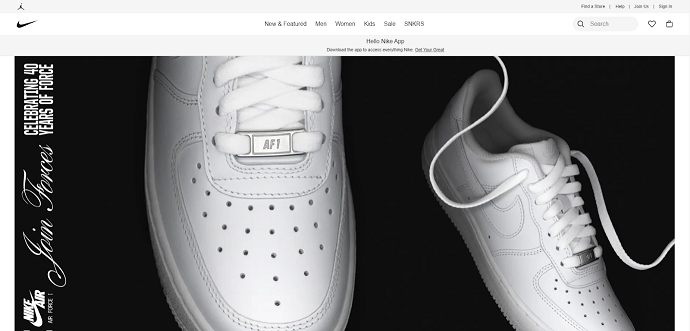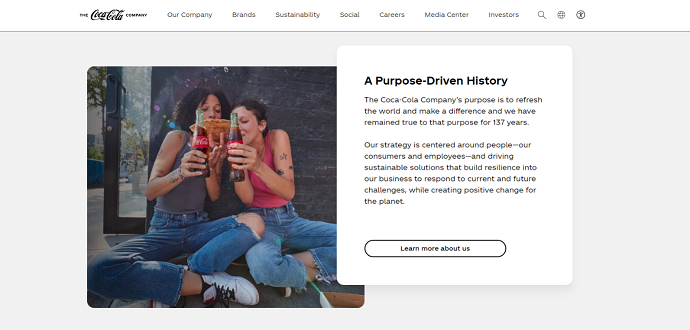In fiercely competitive markets, most brands enjoy mediocre success at best. However, with a strong brand positioning strategy, establishing a distinctive identity for your business brand becomes easier, allowing businesses to enjoy higher ROI. In fact, consistent brand presentation can positively impact your revenue by up to 23%.
In this article, we will share what brand positioning strategy is along with examples, and why you need brand development services for your business.
What is brand positioning?
Brand positioning is the planned process of creating a distinctive and favourable perception of a brand in the minds of consumers. It involves defining and communicating the unique qualities, value proposition, and relevance of a brand to differentiate it from competitors, which helps it create a specific position in the market.
Developing an effective brand positioning strategy lets businesses:
- Connect with their target audience
- Build brand loyalty
- Achieve a competitive advantage
How to create a brand positioning strategy?

To create a robust brand positioning strategy that sets you apart from your competition, consider the following steps:
- Understand your current brand positioning to guide your next steps. This will involve knowing your target audience, your brand’s mission, vision, values, brand voice and messaging.
- Create a chart summarising your brand’s essence, i.e., brand attributes, benefits, personality, source of authority, your ideal customer and how the brand makes them feel.
- Analyse your direct and indirect competitors by conducting market research and customer feedback.
- Conduct a SWOT analysis for your brand — strengths, weaknesses, opportunities, and threats.
- Clearly define your brand’s unique value proposition.
- Use a top-down approach to create a brand positioning framework.
- Create a positioning statement that mentions your target customers, your business category, your product’s top benefit and proof of it. Then test it to see if it appeals to your ideal customers.
- Create an emotional connection with your potential customers to build and strengthen trust.
- Reiterate your brand’s values and USP during the sales process.
- Finally, ensure your customer-facing teams communicate your brand clearly and help enhance the consumer experience.
Here are 3 approaches to Brand Positioning for businesses.
Why you need brand development services
Developing a brand that truly resonates with consumers requires expertise, research, and careful planning. Here are some key benefits of brand development services:
a. Strategic planning:
Professional brand development services help brands effectively articulate their USP through strategic planning developed by conducting market research, studying new trends, and audience analysis.
b. Visual brand identity creation:
Brand strategy experts can help new brands create a cohesive and visually appealing brand identity via logo, colour palette and typography. This helps improve brand credibility and brand recall value.
c. Consistent brand messaging:
When your brand message is consistent and well-aligned with your brand’s persona, you automatically improve brand recall value. Paying attention to brand messaging details is critical to brand positioning. For example, ensuring the tone of your brand messaging and communication style is uniform across all platforms and campaigns.
d. Better customer experience:
Since brand development experts understand the target audience’s needs, preferences, behaviours and pain points, they can craft strategies to enhance the overall consumer experience, further enhancing brand trust and loyalty.
Examples of successful brand positioning strategy
Here are 2 famous examples of well-executed brand positioning strategies:
- Nike

Nike’s brand positioning strategy involves inspiring and motivating athletic performance. The company positions itself as a brand that empowers athletes of all levels instead of simply being a sportswear company.
The iconic “Just Do It” tagline encourages individuals to push their limits and overcome challenges. Nike’s strategy sets them apart by associating the brand with elite athletes like Michael Jordan and Serena Williams, leveraging emotional connections and creating a sense of aspiration and achievement among their community.
2. Coca-Cola

Becoming a globally renowned beverage brand is no easy feat to achieve, but Coca-Cola did it with their 2009 “Open Happiness” campaign. Through this campaign, they focused on happiness, sharing joy and building an emotional connection with their customers.
This campaign was a game changer as people started viewing them not only as a beverage brand but also as an important part of intimate celebrations and nostalgia. This has brought them a sizable chunk of market share for non-alcoholic beverages and ramped up their sales.
The examples above clearly show how powerful a well-thought-out brand positioning strategy can be and the impact it can create in your target audience’s mind.
To create a compelling brand identity and strategically position yourself in the market, choose an experienced brand strategy company like Webfx. We are a full-service digital marketing and online advertising company with an in-depth understanding of brand development and positioning for Guyana businesses.
Contact us to learn how our brand development services can help your business effectively position itself in your current market space.

